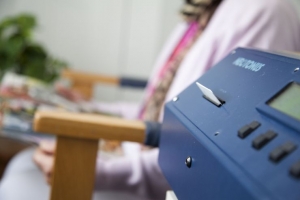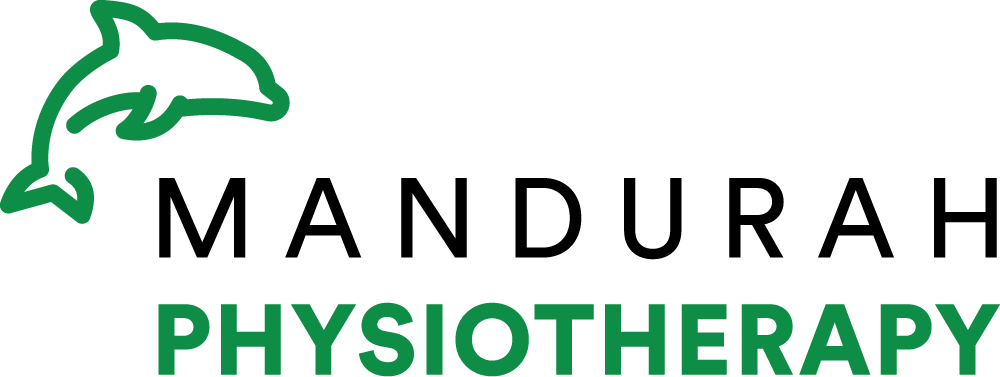
The Neotonus Chair employs powerful pulsing magnetic fields to stimulate nerve activity in the pelvic floor, which in turn exercises the muscles that control bladder function, improving strength and endurance and increasing circulation. The Neotonus Chair is available at Mandurah Physiotherapy.
Neotonus is a non-surgical, non-invasive therapy for the treatment of incontinence. It can also help treat prolapse and recent studies have also shown benefit for men after prostate surgery. This therapy is suitable for patients who suffer from incontinence caused by a weakening of the pelvic floor muscles. Unlike any other therapy, Neotonus exercises all the muscles of the pelvic floor and modulates the pelvic nerves to rebuild strength and endurance, re-establishing bladder control. There are no patches, no probes, and no pain. Treatment consists of sitting fully-clothed in a chair for 20 minutes. While undergoing therapy you can read a magazine or a book, listen to music or just relax quietly. The Neotonus Pelvic Floor Chair is used in conjunction with physiotherapy support as a first-line treatment for stress incontinence.
Incontinence: The condition no-one talks about.
You cough, laugh too hard or walk too far. Then it hits you – the loss of bladder control! If you’re experiencing incontinence you are not alone. Urinary incontinence affects up to 37% of Australian women and contrary to popular belief, it is not a problem exclusively related to aging. Extensive trials of the Neotonus in the United States have shown higher than 80% success with patients, 70% of whom were using pads. Now it is in Australia, bringing similar freedom to long term sufferers.
You will need to be assessed by a physiotherapist from either Grange or Mandurah Physiotherapy for your suitability for treatment with the Neotonus Chair. The chair is situated at Mandurah Physiotherapy Clinic.
Contraindications for treatment include pregnancy, cardiac pacemaker, implantable cardioverter defibrillator, metallic implants such as metal plates/ implants that were used up until 20 years ago (modern stainless steel implants are suitable), and the copper IUD.
Frequently Asked Questions
How does Neotonus therapy work?
Special electromagnets have been designed and built into the seat of the Neotonus chair creating a small effective magnetic field. This produces an induction of activity in the pelvic nerves and muscles. When the patient is sitting in the chair, the muscles of the pelvic floor are positioned directly above the magnetic field. By adjusting the strength of the field, the nerves and muscles of the pelvic floor are induced to contract by the pulsed magnetic fields. This exercising of the muscles builds strength and endurance, helping the patient regain bladder control. Unlike many traditional incontinence treatments, no probes or invasive instruments are used and nothing touches the skin.
Why does the chair make noise during treatment?
The sound comes from the magnets located on the floor of the chair. The “tapping” or “buzzing” noises that you hear result from the cycling of the magnets.
Does the Neotonus Pelvic Floor Therapy System work for all types of incontinence?
Neotonus is for treating stress, urge or mixed incontinence. It is not designed to treat overflow incontinence. Patients should consult their physiotherapist to see if Neotonus is appropriate for them.
How many treatments are required?
For most patients between 16 and 20 sequential treatments will solve the problem. Others may need to repeat the treatments periodically to maintain muscle control.
What does it feel like?
While sitting in the magnetic chair, patients feel a small vibration or tapping and will feel their pelvic floor muscles contracting. They may also see the muscles in your thighs contract or twitch. In some cases, his/her muscles may feel tender or fatigued afterward, but only for a short time.
Will I have any soreness after treatment?
Some patients report soreness in the pelvic floor muscles after their first few treatments. In most cases, the pelvic floor muscles have not been used for quite a while and can become “sore” and fatigued after being contracted just as is normal after exercising. As your muscles being to build strength and endurance during repeated treatments, this will ease. Some patients also report an increase in leakage after the first few treatments – this is due to the fatigued muscles. This should resolve by the fourth or fifth treatment.
If the patient misses a treatment, when should they schedule their next treatment?
Patients should maintain the treatment schedule defined. Should the patient miss a treatment, it should be restarted as soon as possible. As with any treatment program, it is important to comply with the treatment regime prescribed. Ideally, patients should ensure that they will be available for the six to eight week period required for treatment before they commence therapy.
Can a patient undergo Neotonus treatment even after pelvic surgery?
Yes, Neotonus therapy may benefit a patient following surgery. You should discuss the appropriate timing with your therapist.
Can a patient undergo Neotonus therapy after childbirth? If so, how soon?
Yes, Neotonus therapy may benefit a patient following childbirth. Usually, treatment can be considered following the six-week postpartum visit.
Can I receive Neotonus therapy during my menstrual period?
Yes, you can receive therapy during your menstrual period. The treatment will not affect your flow. However, some patients have reported increased and/or decreased menstrual cramping immediately after treatment.
Is it safe to wear a tampon during a Neotonus treatment?
Yes, it is safe to wear a tampon during treatment.
Is it safe to wear a diaphragm during a Neotonus treatment?
Yes, it is safe to wear a diaphragm during treatment.
Should a patient remove a pessary before sitting in the “Chair”?
It is not necessary to remove a pessary before sitting in the “Chair”.
Should a patient with vulvadenea or interstitial cystitis undergo Neotonus therapy?
Yes, these patients may undergo Neotonus therapy.
Can a pregnant patient undergo treatment?
No, the Neotonus therapy should not be used during pregnancy due to the possible risk of miscarriage and potential damage to the developing foetus.
When should I expect to see results?
Results will vary from patient to patient; symptoms of urgency are often reduced after the 2nd or 3rd treatment. Improvement in stress incontinence is may be seen by the 8th treatment, and in most cases, a patient will see improvements by the completion of the 20-minute course of 16-20 treatments.
Data from US clinical studies indicate that 50 percent of women who completed six weeks of Neotonus therapy reported being “completely dry” and an additional 30 percent reported “significant improvement” in their conditions. Many patients are still satisfied with their results 18 months after treatment.
Should I continue Neotonus therapy even after becoming dry?
Yes, you should follow the treatment prescription that your therapist has defined for you.
What are other therapies that are currently utilised to treat incontinence?
A number of treatments are available to control and cure urinary incontinence and include use of self-catheterisation, urethral inserts, bulking agents, pessaries, Kegel exercises, absorbent pads, electrical stimulation, biofeedback, pharmacologic agents and surgery. All of these can be discussed with your therapist.
Can therapy be claimed through my Private health fund?
Therapy is administered at all times by qualified physiotherapists, so you may be able to claim back through your axillary private cover.
